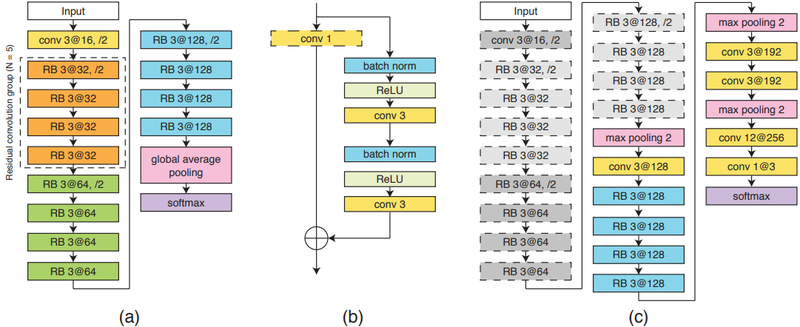Stacked Convolutional Neural Network
Jump to navigation
Jump to search
A Stacked Convolutional Neural Network is a Stacked Neural Network that is a combination of convolutional neural networks.
- Example(s):
- Counter-Example(s):
- See: Encoder-Decoder Neural Network, Deep Neural Network, Neural Network Training System, Natural Language Processing System, Convolutional Neural Network, Stacked Ensemble-based Learning Task, Attention Mechanism.
References
2017
- (Bejnordi et al., 2017) ⇒ Babak Ehteshami Bejnordi, Guido Zuidhof, Maschenka Balkenhol, Meyke Hermsen, Peter Bult, Bram van Ginneken, Nico Karssemeijer, Geert Litjens, and Jeroen van der Laak (2017). "Context-Aware Stacked Convolutional Neural Networks for Classification of Breast Carcinomas in Whole-slide Histopathology Images". In: Journal of Medical Imaging, 4(4), 044504.
- QUOTE: In order to increase the context available for dense prediction, we stack a second CNN on top of the last convolutional layer of the previously trained WRN-4-2 network. The architecture of the stacked network, as shown in figure 2.2, is a hybrid between the wide ResNet architecture and the VGG architecture[1]. CAS-CNN is fully convolutional and enables fast dense prediction due to re-using of overlapping convolutions during inference. All the parameters of the WRN4-2 network were fixed during training. Despite being trained with fixed input patches of size 224 × 224, because of being a fully convolutional network, WRN-4-2 can take a larger patch size during training of the stacked network, and consequently produce feature maps with larger spatial dimensions. Moreover, because of fixing the parameters of WRN-4-2, the intermediate feature maps of this network do not need to be stored during backpropagation of the gradient. This allowed us to train stacked networks with much larger effective patch sizes. Consequently, we trained 3 networks with patch sizes of 512 × 512, 768 × 768, and 1024 × 1024. Producing the dense prediction for a given WSI involved sliding the stacked network over the WSI with a stride of 224.
- QUOTE: In order to increase the context available for dense prediction, we stack a second CNN on top of the last convolutional layer of the previously trained WRN-4-2 network. The architecture of the stacked network, as shown in figure 2.2, is a hybrid between the wide ResNet architecture and the VGG architecture[1]. CAS-CNN is fully convolutional and enables fast dense prediction due to re-using of overlapping convolutions during inference. All the parameters of the WRN4-2 network were fixed during training. Despite being trained with fixed input patches of size 224 × 224, because of being a fully convolutional network, WRN-4-2 can take a larger patch size during training of the stacked network, and consequently produce feature maps with larger spatial dimensions. Moreover, because of fixing the parameters of WRN-4-2, the intermediate feature maps of this network do not need to be stored during backpropagation of the gradient. This allowed us to train stacked networks with much larger effective patch sizes. Consequently, we trained 3 networks with patch sizes of 512 × 512, 768 × 768, and 1024 × 1024. Producing the dense prediction for a given WSI involved sliding the stacked network over the WSI with a stride of 224.

|
- ↑ K. Simonyan and A. Zisserman (2014) "Very Deep Convolutional Networks for Large-Scale Image Recognition". Preprint arXiv:1409.1556